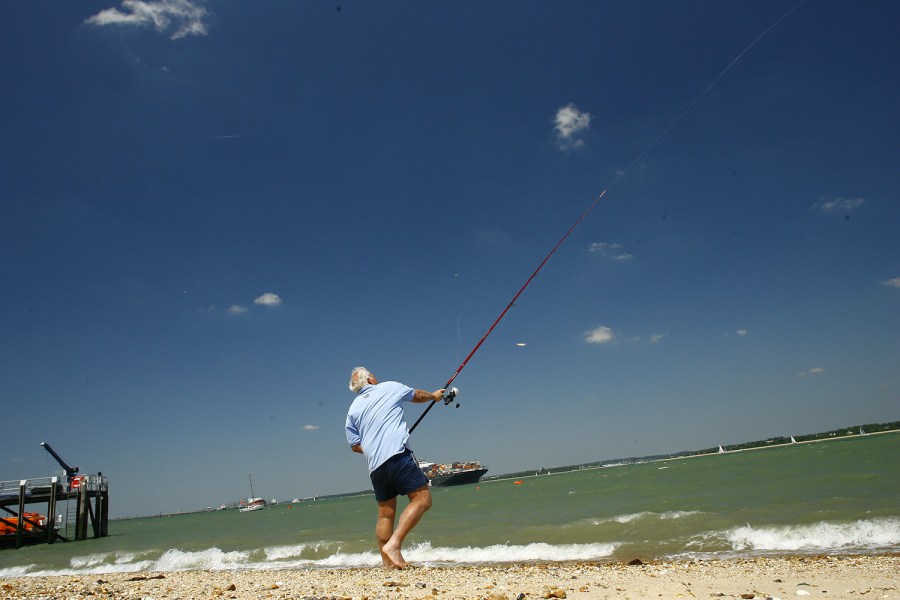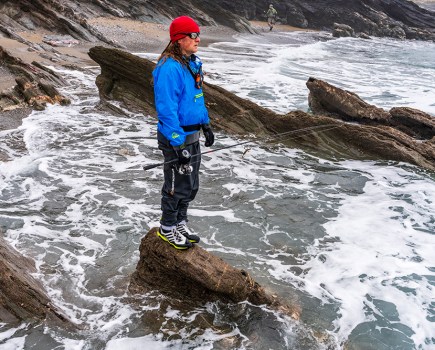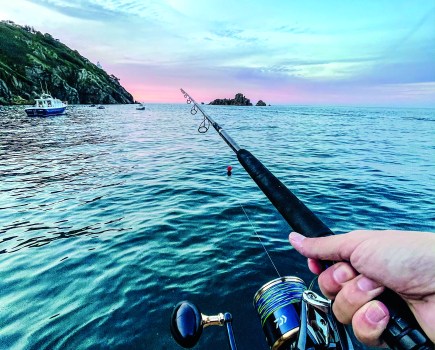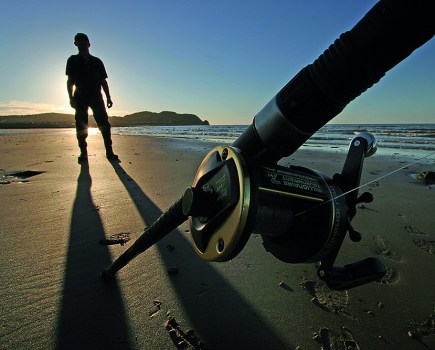Using booms on your shore rigs can boost catches when all else fails, says Chris Clark
Many decades ago, when I embarked on my sea angling journey, fishing booms were in common use. These days they seem to have fallen out of favour, but for me they still play an important and influential role in my match fishing.
Booms are among those items of tackle that I would never be without when scratching at close range, especially in rough conditions when the undertow would leave a standard match rig in a tangled heap.
Back in the day most booms available were shop-bought brass paternosters, and in hindsight these metal candelabras were pretty unsubtle things, to put it mildly. For all that they could be surprisingly effective, especially when flounders were the quarry.
The modern sea angler doesn’t know he’s born as he sets off down the boom trail, especially when he peruses what is produced for the Continental market. Booms are available in a wide choice of colours and materials.
Nailed down hard
It’s worth considering why so many adventurous anglers have turned to what at first sight would seem to be a rather clumsy bit of kit.
The answer, it turns out, is pretty simple. When you’re fishing at close range in very rough conditions they allow you to nail your baits hard to the seabed rather than having them continually swashed around in the undertow.
It’s at times like this that most flatfish, especially flounders, will be feeding hard on the seabed so it is essential to keep your bait as static as possible – you will get few takers with a traditional type of rig carrying longer hooklengths at the mercy of the waves.
A useful rule of thumb when using booms is that the length of the hook snood should never exceed that of the boom itself. Ideally it needs to be around an inch shorter and then it will never tangle with the main rig body, however fine the mono may be.
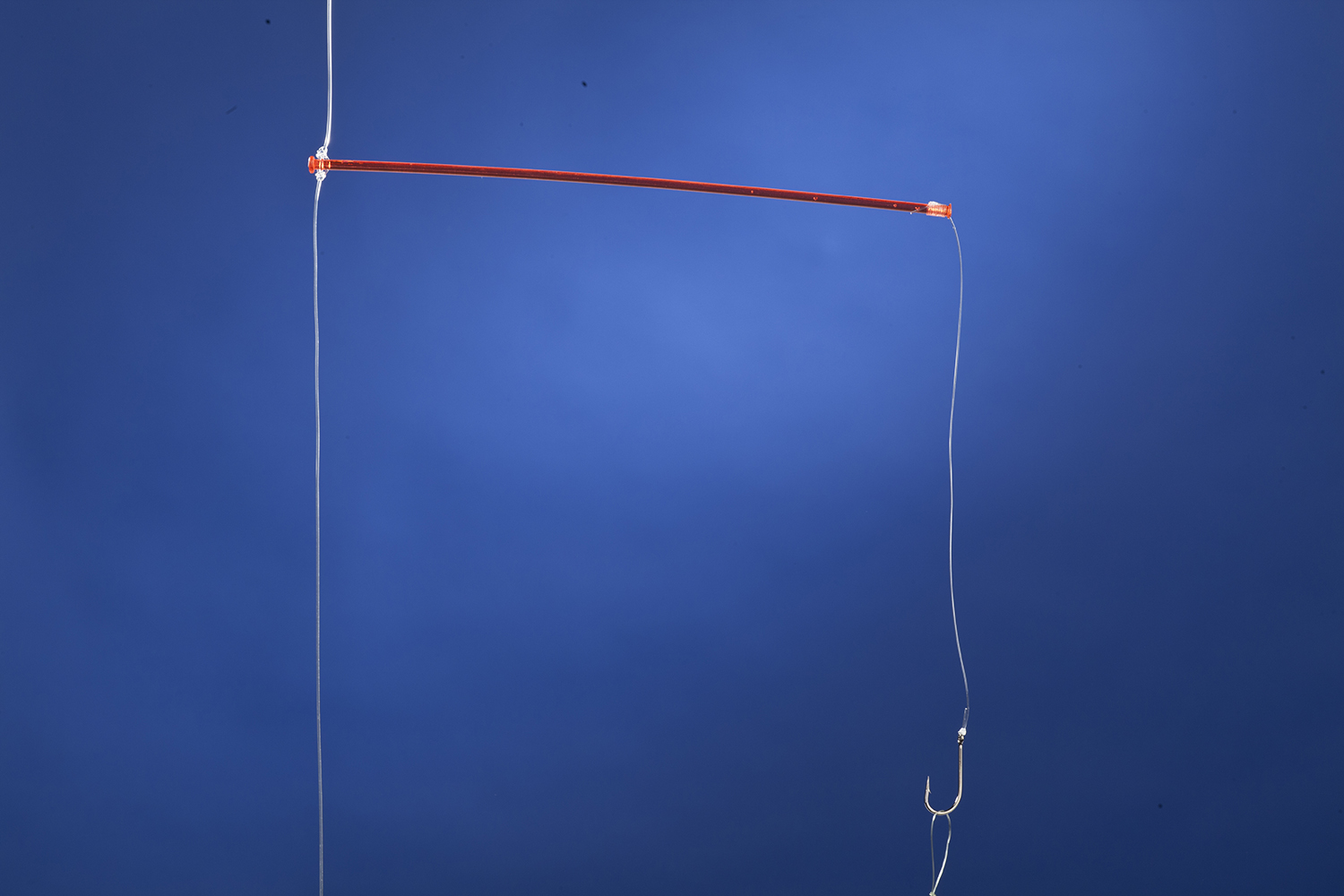
Booms provide near-perfect bait presentation whatever the state of the sea, resulting in a far superior catch rate, and some people have got this type of fishing down to a fine art.
Booms can be had in a variety of materials, but I still favour the metal ones for fishing in turbulent conditions. The added weight gives you far more chance of presenting a bait down where the flatfish are feeding. Plastic booms are far more buoyant and best suited to calm conditions when you want to create a little more movement.
Generally speaking booms are used at close range for flatfish, but they are also extremely effective when targeting small wrasse over rougher ground. Use them with a light rod and you can have some great sport.
You may also like:
How to Tie a Mono Twisted Boom to Prevent Tangles
Under a float
Occasionally I have also used booms when float-fishing, especially for garfish.
Another application when booms really outshine all other tactics. That’s when scadding or pollack fishing down the side of a harbour wall or close to the stanchions around a pier. Having the booms well spread on a long rig is a real bonus – you will quickly find the depth at which the fish are feeding and be able to target that specific area. A small pop-up or glow bead on the hooklength will probably enhance your catch rate.
Adding a float to the top of a trace is pretty simple while fishing down the side of a wall. It will create far more movement, cover more ground and attract those extra fish, and bites are easy to spot as the float dips under the briney. This is an extremely effective and enjoyable type of fishing, whether you’re in a match or just out for the fun of it.
Simple to store
Normally booms are fairly bulky and difficult to store, especially in a tackle box or rucksack, but these can be put on a boat winder the same as a mono trace. When unwound, they just spring back out without bending or going out of shape – absolutely brilliant.
Aside from their superb storage potential these booms are versatile and easy to use. Using them to construct a top quality trace is surprisingly simple, and well within the capabilities of all anglers.
Just use some clear 40lb mono for the rig body, tie a small lead link on to one end and then thread the booms along the line, making sure you have a small bead either side of each one. Once the components are threaded on, the line can be cut to the desired length. Tie a small swivel or connecting link to the top of the trace and now all that’s needed to complete the job is to tie two stop knots either side of the beads and tighten them into position. Such a rig can be built in less than 10 minutes.
Crimps can be used instead of stop knots but I am not a great fan of these for any trace construction, mainly due to the safety aspects. My Beach Buddy still bears witness with a gaping hole where a crack-off through heavy-handed crimping saw a neighbouring angler’s trace miss me by mere inches. Stop knots are far safer and easier to adjust than a fixed crimp.
For those of you yet to go down the boom trail you could be missing out on a few tricks. Used properly they can win matches and put far more fish on the beach.

